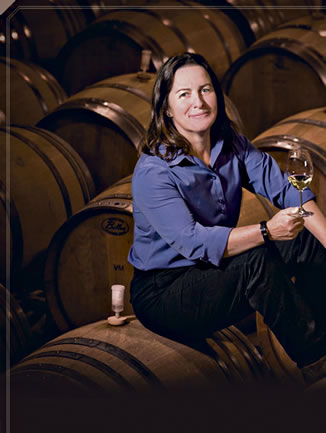The Three G’s Of Winemaking
I once met a wise winemaker/proprietor from Napa Valley who explained his formula for making great wines. It was the three G’s: “The ground, God and the guy.” For him, the ground is the vineyard, the terroir, the physical source of the vine. Its importance cannot be underestimated. For him God is more than a supernatural deity. It represents the weather, the growing season and all the things that are out of human control. The guy (or gal) is the winemaker. As in any profession, there can be good ones and bad ones, but in order to make great wines, you have to have a good one.
Nikki Pruss
The man with the three G’s is Warren Winiarski, former winemaker and proprietor of one of Napa Valley’s iconic wineries, Stags Leap Wine Cellars. Not only is Winiarski one of Napa Valley’s pioneers, but he also made the only wine that is today held at the Smithsonian Institute, 1973 Stags Leap Wine Cellars Cabernet Sauvignon. This famed bottle of wine bested the likes of Chateaux Mouton-Rothschild, Montrose, Haut Brion and Leoville Las Cases at the famous “Judgment of Paris” in 1976. It was a seminal moment in the wine history of California and the United States, showing that our wines could not only compete but outshine the best that France has to offer.
Winiarski sold Stags Leap Wine Cellars a few years ago to Sainte Michelle Wine Estates and the Antinori family. And the quality of the wines is doing just fine, thank you very much, in no small part to “the gal,” Nikki Pruss. Pruss is now the head winemaker in charge at SLWC, has worked with Winiarski since 1990 and carries on the vision of its founder in the wines. That vision is integral to her own philosophy in winemaking:
“You have to know what kind of wine you want to make.”
Quality and greatness are not haphazard. For many years, the SLWC mantra has been “balance, elegance and restraint.” This is particularly refreshing in these days of wines that can approach “monster” status with gargantuan personalities (and price tags), replete with 15 percent-plus alcohol levels and the concomitant 95100 point rating.
She strives for these things through attention to detail. She knows each of the vineyards intimately, not only the estate vineyards, but those of the growers from which they purchase fruit for “Artemis” Cabernet Sauvignon ($50) and “Karia” Chardonnay ($32). Longterm friendships have grown from long-term contracts. Although not inexpensive, these wines offer some of the best values in Napa Valley today. And I say value because the wines are utterly consistent and are as pleasurable as many more expensive versions. They are ripe and balanced, they offer exactly what one would look for in Napa Valley Cabernet Sauvignon and Chardonnay. There is oak, but none more than needed. There is ripeness, but not preserves. There is length and refinement along with satisfaction.
Pruss says she loves “clarity of a bell” in her wines, and the Estate Wines are a beautiful testament to that. SLWC produces four wines from Estate vineyards, the Arcadia Vineyard Chardonnay, Fay Vineyard Cabernet Sauvignon, S.L.V.
Vineyard Cabernet Sauvignon and Cask 23. These are all reference-standard bottles made in limited quantities. The 2008 Fay ($100) has, dare I say, a Bordeaux-like aroma with deeper black fruit notes and plenty of stuffing. It envelopes the palate with a sweetness of fruit along with a chocolate note and velvety tannins. The SLV ($135) has more amplitude, also a more clear expression of earth along with a more bitter chocolate note. The finish is even longer and suggests this wine will live for many years. Alas, the Cask 23 is in such small quantities, I have yet to taste it.
But what they really showcase is the Stags Leap District character of the “iron fist in the velvet glove.” The wines are rich and hedonistic without overplaying to sweetness or ripeness. They are like LP vinyl versus an MP3 track. Pruss is fond of saying that she wants to create those special experiences awaiting people in the bottle. I would say she has succeeded.






